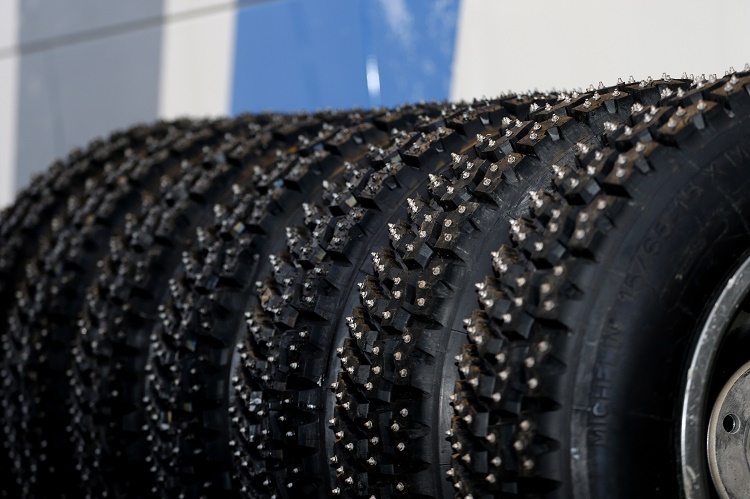Do I need to buy winter tires or can I just get snow chains?
What the heck is siping?
When do I have to have studded tires and when will studless do?
If you’re wondering how to pick the right tires for winter, or whether you need them at all, here are answers to the eight most common questions about winter tires.
(A lot of people still call tires used in the cold months “snow tires,” but it’s more accurate to call them “winter tires.” For purposes of this article, we use both terms to mean tires designed for winter driving.)
Winter tires are important for safe driving if you live somewhere that gets snow, ice, sleet or freezing rain and temperatures of 40 degrees or colder. They’re also the right option if you routinely make trips through snow zones or the mountains during the cold months.
Learn about the difference between all-season tires and snow/winter tires here.
Some all-season tires have an M+S rating. This stands for mud and snow. These tires have a more aggressive tread design to deliver better traction in a variety of conditions using larger tread blocks and wider gaps between them. The purpose of these tires is to achieve optimal tire life along with good performance in most weather conditions.
But it doesn’t mean they’re adequate for winter driving. In slick conditions, they don’t deliver the traction, control and short stopping distance that you get from a snow tire.
If you want safer driving on packed snow or ice, look for tires made with the right compound and branded with the Mountain Snowflake. This means they’ve actually been tested and certified to perform in winter conditions.
 “I have all-season tires, so I don’t need snow tires. Right?”
“I have all-season tires, so I don’t need snow tires. Right?”Wrong. Don’t believe it? See this driving comparison between all-season and snow tires.
If you’re driving on snowy or icy roads, only winter tires will give you good stopping ability and secure handling. This is because they’re built very differently. How?
Different compound. Summer and all-season tires are made with a stiffer rubber compound. This helps the tire retain its shape when it’s rolling on hot pavement. Winter tires are made with hydrophilic (that’s “water-loving”) rubber which stays softer and more pliable in winter weather. This more flexible rubber is one reason you get more traction on snow and ice.
Another reason is tread design. Winter tires have a higher “void-to-lug” ratio, meaning there are larger grooves between the blocks of tread (the lugs). The tread blocks also have irregular, sharp edges.
When a tire with wide grooves and biting edges travels over packed snow, it cuts through and scoops some of the snow into the voids on the tire surface, allowing the tread to stay in closer contact with the road.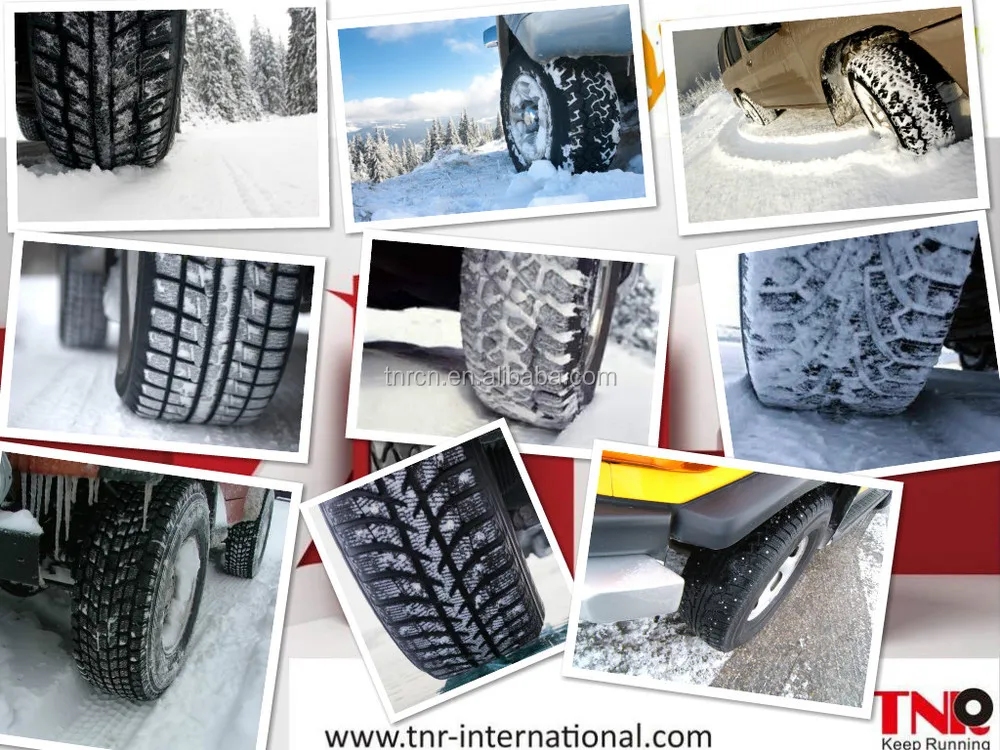 Then the velocity of the tire ejects this snow from the grooves. This is how winter tires provide more aggressive traction than all-season tires.
Then the velocity of the tire ejects this snow from the grooves. This is how winter tires provide more aggressive traction than all-season tires.
Most snow tires are already siped, with small patterned slits on the lugs that create extra edges for better road grip. Additional safety siping can be done for a fee on new or used tires. If you’re regularly traveling on slick roads, the added traction from custom siping is a good way to improve starting, stopping and rolling traction.
Before you jump on that set of “lightly used” winter tires on Craigslist, do three quick checks. First, verify they’re the right size. You can look in your vehicle owner’s manual or right on your existing tires’ sidewall close to the rim for the series of numbers. (Here’s a primer on what they all mean.) If you’re not sure the tires you’re considering are the correct size, call a tire dealer and make sure.
Second, measure the tread depth by using a tire tread depth gauge. You can pick one up at any auto parts store for under five bucks. Or have a tire store tech do it; it should be free. Take measurements in multiple places in the grooves on each tire.
A new tire typically has 11/32nds of an inch in tread depth. A rule of thumb is that if there are 6/32nds of an inch or less in tread remaining on a winter tire, it’s about to lose a good deal of snow performance. So think carefully about whether you’re going to get what you’re paying for.
Third, be sure there’s not a problem with uneven wear. Did your tread gauge measurements show any tread depth difference between the four tires? It’s really common for tires to wear differently over time. If the disparity between any two tires is more than 3/32nds of an inch, pass on those used tires. Driving with mismatched tires or putting the wrong size on your vehicle will NOT save you money in the long run. You’re risking big repair bills for your transmission.
It’s also a bad idea to put winter tires on only the front or back. This creates a big difference in traction between your axles. And this will mean less steering control, not more.
Tire chains can be important — and are sometimes required — for traction when you’re traveling in the mountains or on icy roads. But they’re not made for driving at highway speed or on bare pavement. You risk damaging your chains if you try this.
Don’t think of chains as a substitute for winter tires but as an option you need to have ready when you’re driving on snow.
Depending on the conditions and your state’s rules, traction controls in snowy areas will range from requiring only the minimum — like M+S tires on the drive axle — up to chains on all tires, including all-wheel and four-wheel drive vehicles. Here are California’s chain controls, for example.
The tire dealer will consider your driving habits, where you’re traveling and typical winter conditions in your area when recommending what you need.
Studless snow tires work well on slush and packed snow. They get traction through wide, deep grooves and lots of irregular surfaces with sharp edges. This allows the rubber to cut through snow and grip the road.
Studded tires provide the best traction you can get, even when you're encountering ice or packed snow. Studs are lightweight, small metal spikes that are staggered across the tread. They help break through packed snow and ice-covered roads to give you better traction. Note: Extra tread depth is needed to accommodate studs, so studded tire size options are limited. Also, the times of year when studded tires are allowed on the road vary by state. Here’s a guide to studded tire regulations.
It’s a question of time and money. Here’s a way to decide:
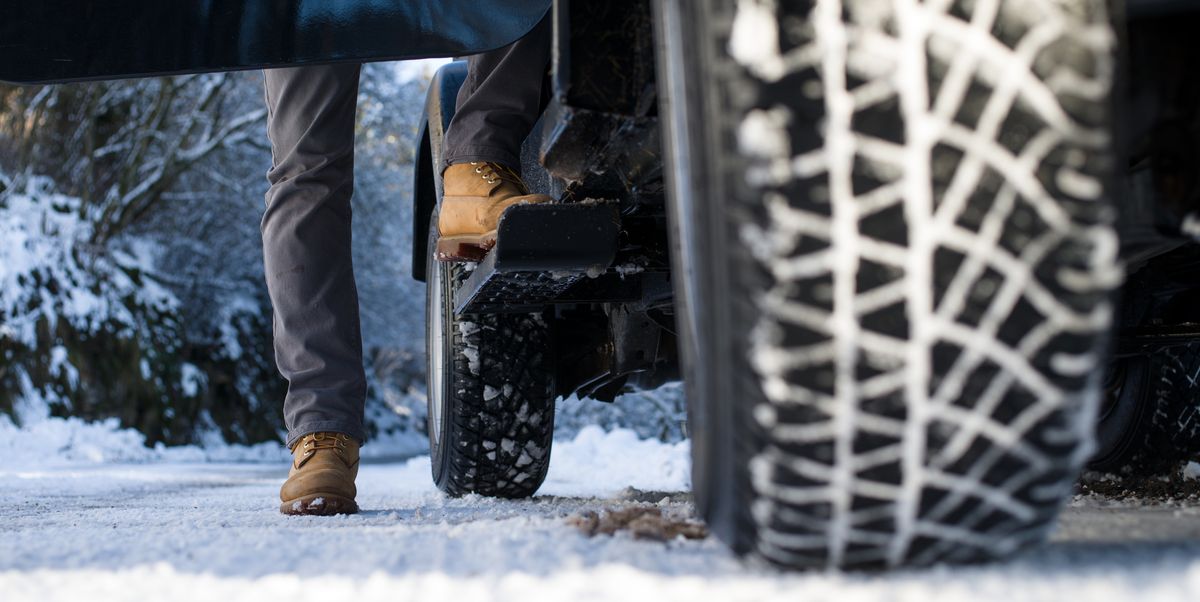 (Les Schwab will swap out tires purchased at our stores at no charge if they’re mounted on separate wheels.)
(Les Schwab will swap out tires purchased at our stores at no charge if they’re mounted on separate wheels.)Also consider the extra wear and tear on your tires that comes with unmounting and remounting tires on only one set of wheels. Especially with low-profile tires, it’s not uncommon for an inexperienced tire tech to damage the inside edge of a tire near the beads, the places where the tire gets pried off and pushed back on.
If you’re leaning toward separate wheels for your winter tires, here are some tips on selecting the best wheel finishes for winter conditions.
Check out tests from the Tire Industry Association in this video to see what the difference winter tires can make.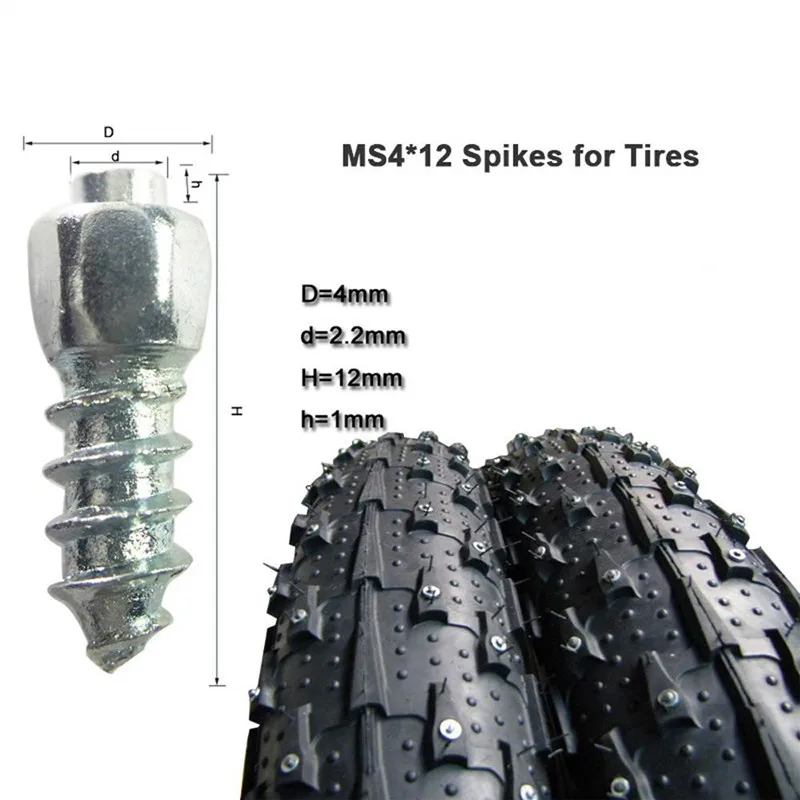
Some all-season tires are marketed as working equally well in summer and winter. That may be true in dry, mild climates where the seasons don’t vary much. But you’ll only get confident traction, braking and control on snow and ice with a winter tire. If you live in a place with winter weather, you’ll need tires marked with the Three-Peak Mountain Snowflake for safest handling. Because not all tires with a mountain snowflake have a winter compound, ask your tire dealer what you really need.
Want more tips on winter road safety? See 19 Winter Driving Resources You Can’t Do Without.
SHOP WINTER TIRES
Outside's long reads email newsletter features our strongest writing, most ambitious reporting, and award-winning storytelling about the outdoors. Sign up today.
Sign up today.
Nowhere does consumer perception lag further behind on-the-ground reality than in the car world. And that’s a problem, because your outdated beliefs, loyalties, and superstitions are probably costing you money and compromising your safety.
We discussed just that last year, when I told you that running winter tires matters way more than buying an all-wheel drive car. But that article had one major flaw: I neglected to explain why studded tires are so vastly inferior to the modern studless alternative. And readers have since indicated that they are actually running studded tires in conditions that don’t merit them. This is my attempt to fix that.
Studs Only Grip IceIf you don’t read any further, the fact that studs only provide additional grip on clear ice is probably the most important takeaway I can give you. Studs themselves are small, sharp metal protrusions installed into the tread of a tire. Because they get between the rubber and whatever surface you’re driving across, they need to be able to poke into that surface and momentarily stick there, resisting lateral forces, in order to provide grip.
Picture other winter surfaces: in packed, loose, or deep snow, the studs will definitely penetrate, but they won’t find the resistance necessary to actually add grip. In slushy or wet conditions or on bare pavement, the tire needs to come into contact with the road surface in order to find traction—and the metal studs actually get in the way of that.
So studs help on bare ice only, do nothing for you in snow, and actually make you less safe in other conditions.
For last year's article on all-wheel-drive versus better tires, I interviewed Woody Rogers, the head of Tire Rack’s testing team. Because Tire Rack is the largest online tire retailer, Rogers tests virtually all makes and models of tires and his job is to be as objective as possible. Tire Rack doesn’t care about selling you a specific tire; they care about selling you the best tire for your needs. “Drivers can’t dictate the surfaces they drive on,” he told me. “They just need a tire that works across all the hazardous conditions they face in winter months.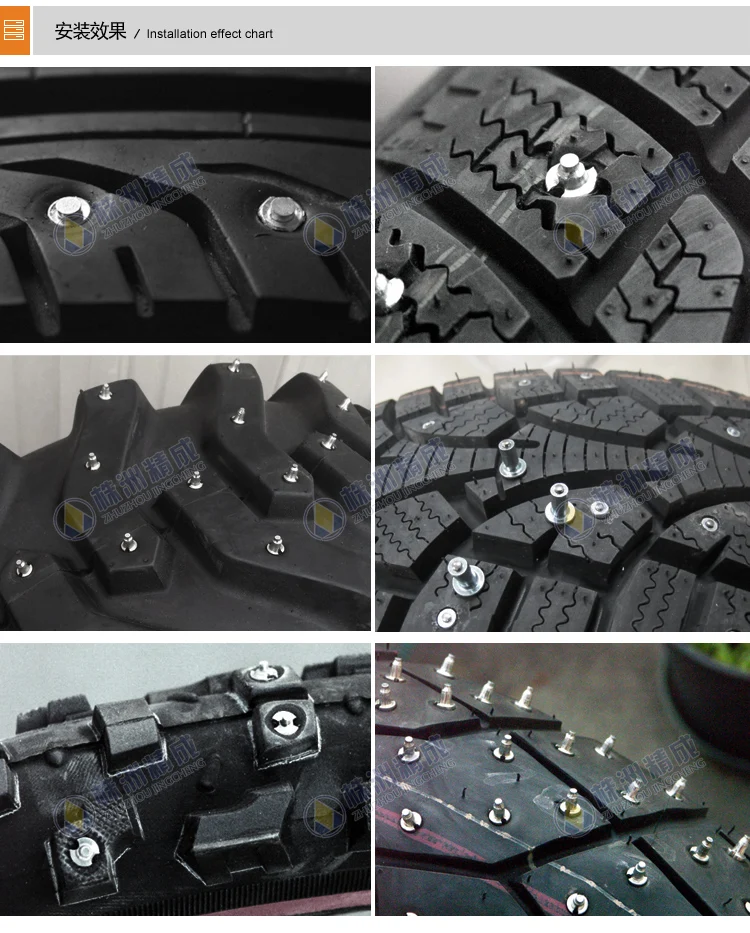 ” And that’s not studs.
” And that’s not studs.
Back in 2001, Washington State conducted an exhaustive study into the performance of studded tires. One of its most interesting conclusions was that, while studs do grip clear ice very well, they only do so under a very specific set of circumstances.”Studs are most effective on ice at or near 32 degrees F and lose their efficacy as temperatures drop and the ice becomes too hard for the studs to grip or when temperatures rise and ice melts to slush or wet pavement,” the study reads. The minimum effective temperature for studs? Zero degrees Fahrenheit, according to the study.
And that’s a huge problem, because bare ice in those temperature ranges where studs help only exists on roadways for a very small amount of time. In Washington, the study found that conditions where studs work only exist one percent of the time. In Alaska, those conditions occurred just six percent of the time during winter months.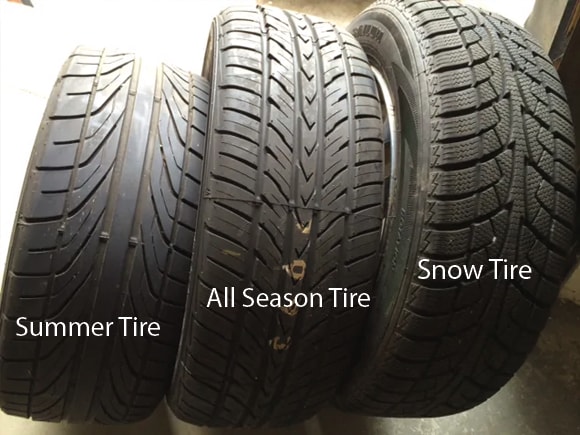 In Connecticut, that number is just half a percent. In Ontario, bare ice between zero and 32 degrees accounts for less than two percent of vehicle miles traveled.
In Connecticut, that number is just half a percent. In Ontario, bare ice between zero and 32 degrees accounts for less than two percent of vehicle miles traveled.
Go back to Rogers’s quote above, and you’ll see why having a tire that only works as advertised in such specific, rare circumstances will be problematic. I called him back up for help with this article. “There is absolutely a time and place where a studded tire is a superior solution,” he tells me. “But I don’t know a place in the U.S. where conditions merit studs all winter. So, you have to consider managing the tradeoffs.”
Stopping distances from 25 MPH for Bridgestone Blizzaks (the first modern studless winter tire), compared to those for studded winter tires, and all-seasons on both bare ice and packed snow, at 10 degrees F. (Washington State Transportation Center)The TradeoffsTiny metal spikes don’t grip pavement as well as soft, pliable rubber. So, by getting between the rubber and the road, studs actually reduce grip, and therefor safety, in slushy, wet, or dry conditions.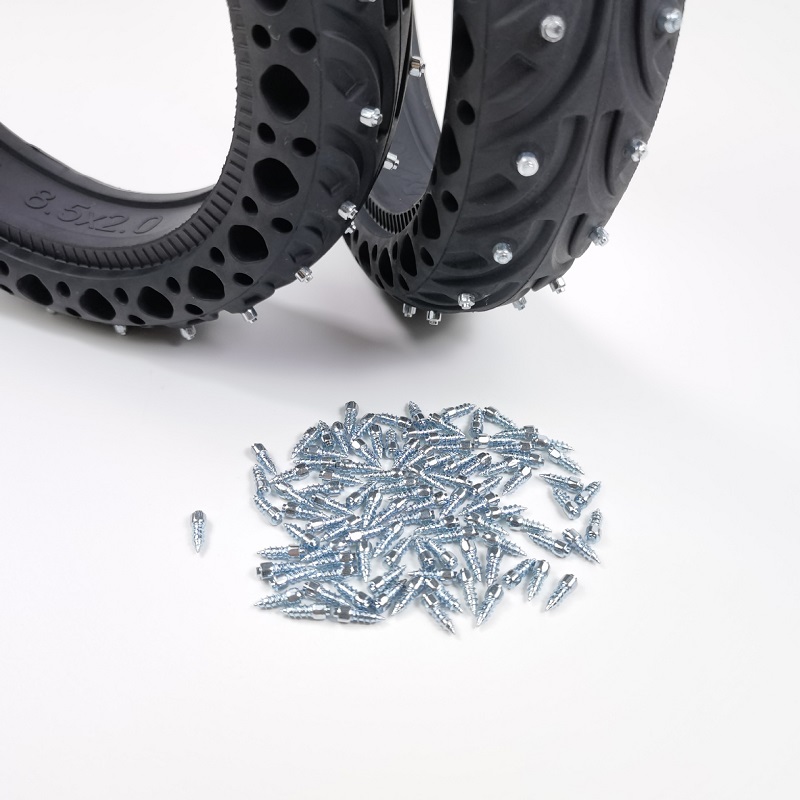
A study conducted in Alaska in 1994, soon after the advent of modern studless winter tires, compared the braking, acceleration, and cornering performance of studded, studless winter, and all-season tires across packed snow, clear ice, and bare pavement. Studded tires demonstrated some advantage in braking and acceleration on bare ice, were actually out-cornered by studless winter tires, and were demonstrated to reduce grip in all tests on bare pavement. Consider the small fraction of the time in which conditions merit studs and you can see that you are sacrificing grip—and, again, safety—throughout most of the winter.
“There is absolutely a time and place where a studded tire is a superior solution. But I don’t know a place in the U.S. where conditions merit studs all winter. You have to consider the tradeoffs.”
And that's assuming your studs are in good condition. “Think about how much of your driving here in the U.S. is spent on non-snowpack roads,” says Rogers. “And that is wearing at the studs, blunting the sharpness of them, and wearing them down. That takes away some of the traction advantage.”
“And that is wearing at the studs, blunting the sharpness of them, and wearing them down. That takes away some of the traction advantage.”
How much grip is lost as studs wear? “When stud protrusion diminishes to 0.024 in. (0.6 mm), the frictional effect from the studs becomes negligible,” concludes the Washington study. It found that after just 1,000 miles of driving on bare pavement, the braking distance of studded tires increased by 12 percent.
Studs aren’t the only things that wear when they’re driven on bare pavement. The road surface itself is also torn to pieces. By damaging pavement so significantly, studs actually create a significant amount of pollution, throwing microscopic asphalt and concrete particles into the air. In Japan, concerns about this type of pollution led to the development of moderns studless winter tires in the early 1990s. Studs are now banned in that (very snowy) country.
“And then there’s the noise,” says Rogers. “The noise is crazy. I still remember the first time we drove on studded tires as part of a test here, I was in a caravan with other cars, and we had a studded car and a studless car. I was an eighth of a mile behind the studded car, and even with the windows up, I could here the noise from the tires of the car ahead of me.”
I was an eighth of a mile behind the studded car, and even with the windows up, I could here the noise from the tires of the car ahead of me.”
All that for a small advantage in one specific circumstance that only accounts for a tiny fraction of the miles you’ll log during the winter?
Stopping distances on bare ice, at different temperatures. (Washington State Transportation Center)Studs Aren’t Great to Drive OnBack in the 2000s, when it was my job to test new cars, I once crashed a Corvette into a bank of frozen snow way up in northern Sweden. Why? Well, because I’m an idiot, obviously. But part of the reason was also due to the unique handling characteristics of studded tires, which I failed to fully account for.
“With a studded tire, what we’ve found particularly during braking and acceleration, is that once the tire spins, the studs cut a groove in the ice,” says Rogers. “Then the next stud that comes along behind it comes right through that same groove and has nothing to grab onto. ” It only takes about a quarter of a revolution for that effect to take place, and once it occurs, grip disappears instantly.
” It only takes about a quarter of a revolution for that effect to take place, and once it occurs, grip disappears instantly.
“That leads to what you felt in the Corvette,” Rogers tells me. “Grip, grip, grip, grip, grip, then whoops—who pulled the rug out?”
Even if you’re not lapping a car around a race track carved onto a frozen lake, this lack of communication from studded tires could impair your ability to drive safely in winter conditions. Whereas studless tires lose their grip progressively, communicating to the driver that they’re nearing the limits of available grip, studded tires lose grip suddenly, without warning. You won’t know you’re driving too fast for the conditions until you end up in a ditch.
Do You Need Studded Tires?The simple answer is that studs are an outdated technology that's no longer relevant in the vast majority of driving conditions.
“The traction of studded tires is slightly superior to studless tires only under an ever-narrowing set of circumstances,” the Washington study concluded—way back in 2001. “With…the advent of the new studless tire, such as the Blizzak, since the early 1990s, the traction benefit for studded tires is primarily evident on clear ice near the freezing mark, a condition whose occurrence is limited. For the majority of test results reviewed for snow, and for ice at lower temperatures, studded tires performed as well as or worse than the Blizzak tire. For those conditions in which studded tires provided better traction than studless tires, the increment usually was small.”
“With…the advent of the new studless tire, such as the Blizzak, since the early 1990s, the traction benefit for studded tires is primarily evident on clear ice near the freezing mark, a condition whose occurrence is limited. For the majority of test results reviewed for snow, and for ice at lower temperatures, studded tires performed as well as or worse than the Blizzak tire. For those conditions in which studded tires provided better traction than studless tires, the increment usually was small.”
This winter, will you drive in extreme cold? Will you drive on snow? Will you encounter bare, plowed highways? Winter driving is defined by its unpredictability. Fortunately for all of us, there is a device designed to deal with all of it: The modern studless winter tire.
The seasonality of tires determines their structure and composition. Winter tires have an elastic base that does not tan, remains soft and retains traction at low temperatures.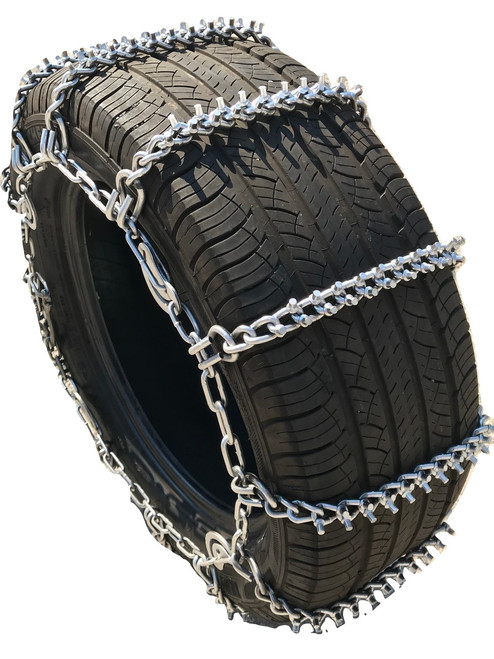 It allows you to comfortably drive a car on an icy road, calmly pick up speed and stop in a timely manner even on ice, with a minimum braking distance.
It allows you to comfortably drive a car on an icy road, calmly pick up speed and stop in a timely manner even on ice, with a minimum braking distance.
Today, tire manufacturers offer two types of tires that are suitable for use in the city and the region, can be installed on four-wheel drive, front or rear. These are classic studded and friction wheels, the so-called Velcro. Technological differences of tires allow you to choose a model for a different driving style and install it on a car of any class. What is better in winter in the city or in the region? - let's figure it out.
When choosing tires for the winter, keep in mind that the difference between studded and friction models is in studs, rubber compound composition, number and size of sipes, tread pattern. Therefore, it is wrong to think that studded tires are Velcro that has been studded. It follows that if the rubber has lost most of the studs, it cannot be considered Velcro, since the models have a different composition and tread pattern.
Let's take a closer look at each type of tire:
Equipped with metal studs, suitable for driving on icy roads, guarantees optimal grip on any surface. It is effective on snow-covered surfaces, has a minimum braking distance. Today, the best manufacturers make front-wheel drive models, assemble kits for all-wheel drive and rear-wheel drive cars. Thanks to its elasticity and pattern, the tread confidently holds the road and does not wear out under heavy loads.
Before choosing tires, you need to decide which studs will suit your driving style and which pattern will provide good flotation in operating conditions. Metal cutters installed in the winter tread provide flotation on loose snow and dry ice. Therefore, such kits are suitable for motorists who live in the countryside or regularly travel to the region.
The selected rubber type is not equipped with studs, but is suitable for winter use. The properties of the composition allow the use of Velcro at low temperatures. Even during severe frosts, the base of the tire does not lose elasticity. The best models have a fairly rigid base, soft and rounded side blocks. They provide good maneuverability on wet winter roads, minimal stopping distance, suitable for Moscow and the region.
The properties of the composition allow the use of Velcro at low temperatures. Even during severe frosts, the base of the tire does not lose elasticity. The best models have a fairly rigid base, soft and rounded side blocks. They provide good maneuverability on wet winter roads, minimal stopping distance, suitable for Moscow and the region.
The presence of pronounced sipes on the surface allows the Velcro to literally stick to an icy road or packed snow. The model has channels for water drainage, so aquaplaning is impossible with careful driving. Friction tires differ from rubber with spikes in properties that allow you to comfortably operate the car at zero temperature.
In order for studded tires to show their full potential and not lose metal cutters during operation, a new set needs to be run in. This is done before winter. It is enough to drive a few hundred kilometers in a quiet mode for the spike to fit into the groove.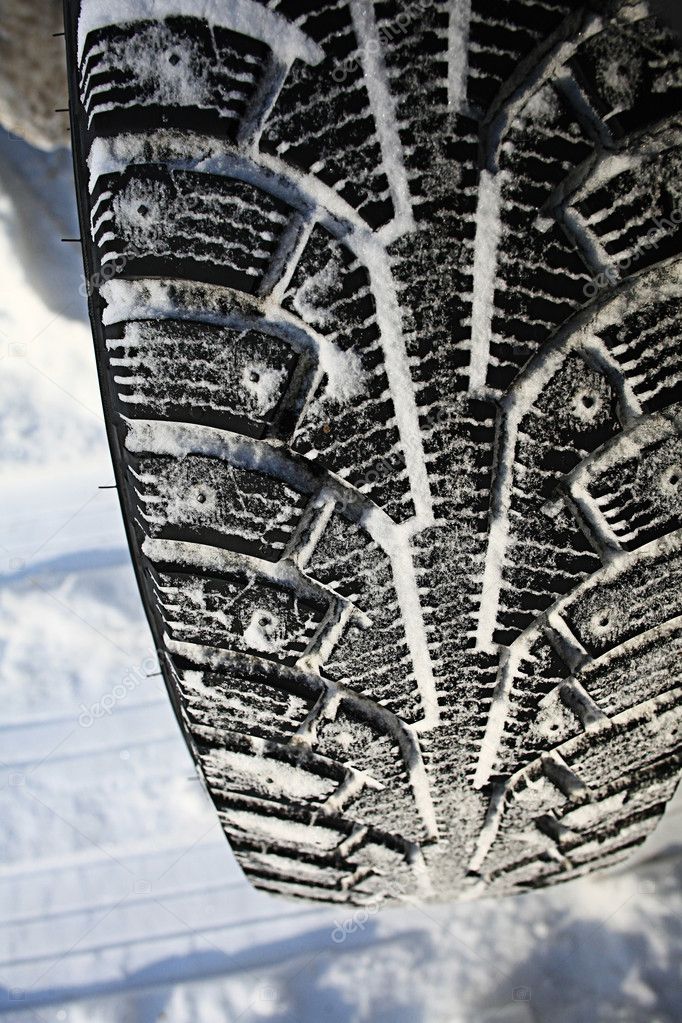
Winter
Tires Goodyear UltraGrip Cargo
Winter Drive Protection Sound Comfort
Rating:
4.5
Tires Goodyear UltraGrip Ice 2
Winter Drive Protection Sound Comfort
Rating:
4.5
Tires Goodyear UltraGrip Ice SUV
Winter Drive protection
Rating:
4.5
Tires Goodyear UltraGrip Ice +
Winter Drive protection
Tires Goodyear UltraGrip Arctic 2
Winter Drive Protection Run On Flat
Rating:
4. 5
5
Tires Goodyear UltraGrip Performance Gen-1
Winter Drive Protection Run On Flat
Rating:
4
Tires Goodyear UltraGrip Performance 2
Winter Drive protection
Tires Goodyear UltraGrip Ice 2+
What are the advantages of studded tires:

Since even the best models have disadvantages, let's dwell on the disadvantages of studded tires. Due to the structure of the spike, which is located just above the tread, tires make additional noise when driving on asphalt. Despite the difference in traction on ice, on asphalt surfaces, rubber with a stud loses to Velcro, as the cutters wear out during operation.
There is a difference between friction and studded models - if the latter have special metal cutters that provide a hook, then the former have sharp sipes that cling to the surface. Velcro is effective even at temperatures down to -30 degrees, it keeps the road well on dry asphalt, ice or snow.
Velcro is effective even at temperatures down to -30 degrees, it keeps the road well on dry asphalt, ice or snow.
The best features of the model:

Noting the advantages of Velcro, let's take a closer look at the disadvantages. Friction tires do not have good grip on icy roads, and are inferior in this indicator to studded models. Therefore, during a skid, it will be more difficult for the car to find a hold. Velcro slips on an icy road when braking, which increases the stopping distance. The lack of a good grip makes it difficult to start moving - the car slips and slips if it climbs a steep hill.
When choosing tires for a car for the winter, you need to focus on the climate. If a rear-wheel drive type of transmission is used in a climate where there is a lot of snow, it is better to install studded tires. They will have better grip on the road, help to overcome loose snow. If the car has front or four-wheel drive and is operated in the south, then Velcro will be enough.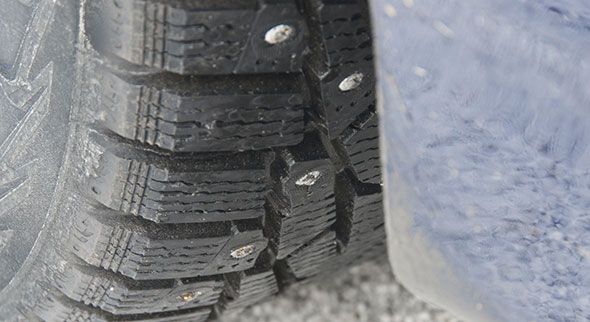
It is worth additionally considering the surface on which you have to move more often. For residents of the city, the choice in favor of friction tires is obvious, since recently in winter there has been little snow and the roads are mostly paved. The effectiveness of spikes under such conditions will not be shown.
When studying the best tire models, a car enthusiast needs to evaluate personal driving experience. When choosing Velcro, the driver must be confident in his abilities that he will keep the car in the lane in any difficult situation. If the motorist is inexperienced, it is better to install studded tires. An additional factor in the choice may be the drive of the car. The behavior of the car in winter conditions depends on this. Since it is easier to drive a car with all-wheel drive or front-wheel drive than with rear-wheel drive, you can put classic studded wheels here.
https://ria.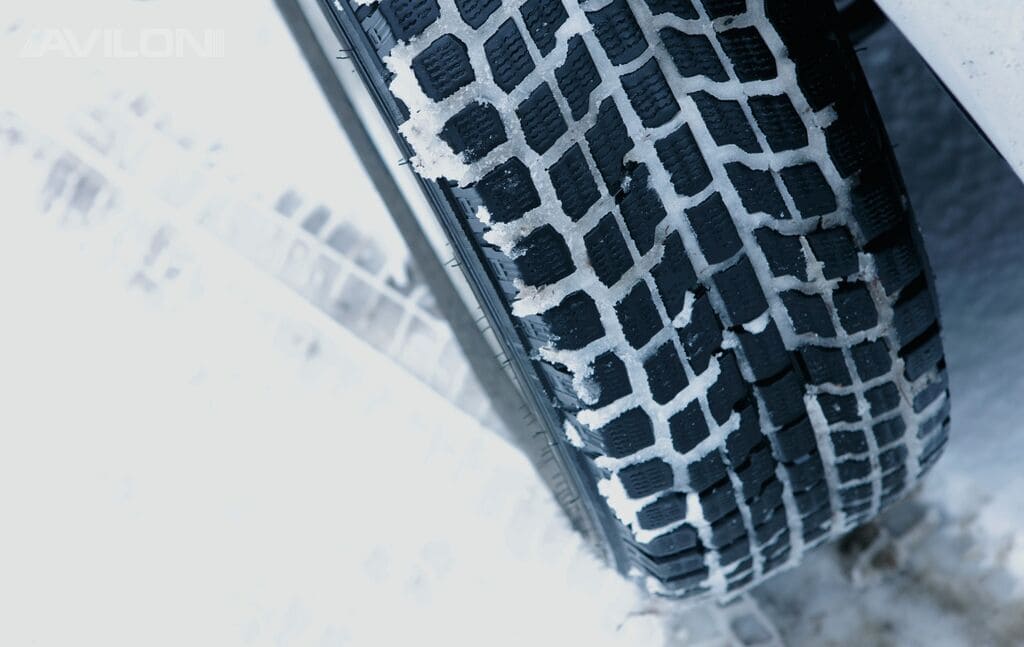 ru/20180118/1512786049.html
ru/20180118/1512786049.html
A slippery question: what is better for winter - studded or non-studded tires?
A slippery question: what is better for winter - studded or non-studded tires? - RIA Novosti, 03.03.2020
A slippery question: what is better for winter - studded or non-studded tires?
Winter in Russia always comes unexpectedly: in some regions for a couple of months, in others for half a year or even more. This season in the central regions of the country RIA Novosti, 01/18/2018
2018-01-18T08:00
2018-01-18T08:00
2020-03-03T09:05
/html/head/meta[@name='og:title']/@content
https://cdnn21.img.ria.ru/images/sharing/article/1512786049.jpg?15127838331583215528
russia
RIA News
1
5
4.7
96
7 495 645-6601
Rossiya Segodnya
https: //xn---c1acbl2abdlkab1og.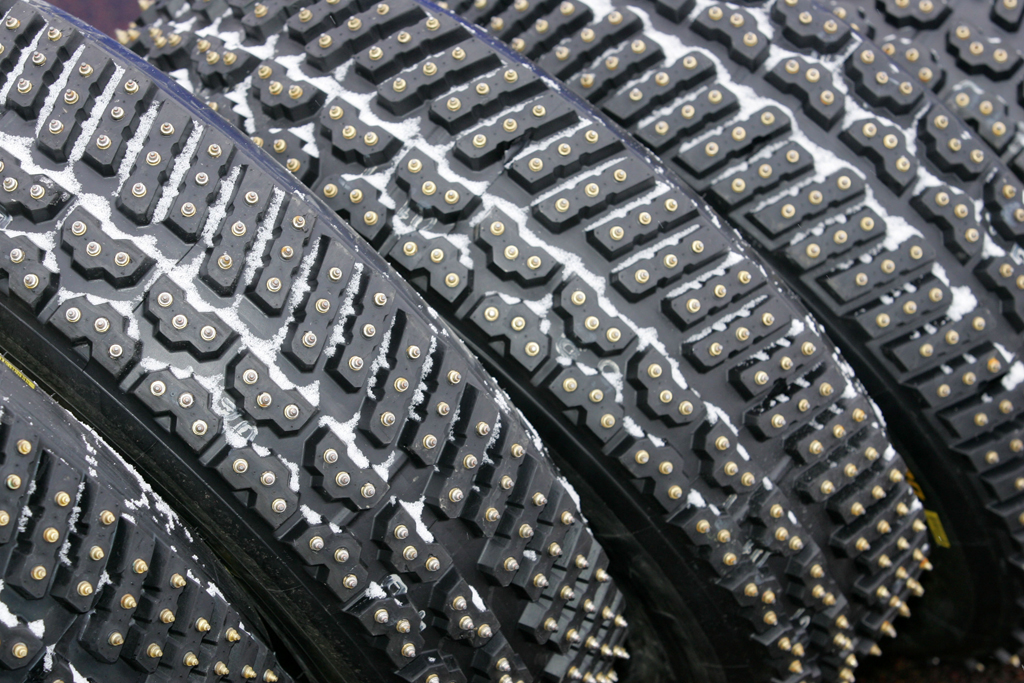 xn--p1ai/Awards/
xn--p1ai/Awards/
2018
RIA Novosti
1
5
4.7
9000 9000
95 645-6601
FSUE MIA Rossiya Segodnya
https://xn--c1acbl2abdlkab1og.xn--p1ai/awards/
News
ru-RU
https://ria.ru/docs/about /copyright.html
https://xn--c1acbl2abdlkab1og.xn--p1ai/
RIA Novosti
1,000 .xn-p1ai/ awards/
RIA Novosti
1
5
4.7
9000
7 495 645-6601
FSUE MIA "Russia Today"
2222 https://xn--c1acbl2abdlkab1og.xn--p1ai/awards/
RIA Novosti
1,000 .xn--p1ai/awards/
auto, russia
auto, Russia
MOSCOW, January 18 — RIA Novosti, Sergey Belousov. Winter in Russia always comes unexpectedly: in some regions for a couple of months, in others for six months or even more. This season, in the central regions of the country, almost no snow was seen until the New Year. Each motorist has already decided for himself which tires will best ensure his safety: studded or non-studded. RIA Novosti, together with tire industry experts, found out what is preferable in certain situations and how to behave on Russian roads when driving a car with one or another type of winter tires.
Each motorist has already decided for himself which tires will best ensure his safety: studded or non-studded. RIA Novosti, together with tire industry experts, found out what is preferable in certain situations and how to behave on Russian roads when driving a car with one or another type of winter tires.
December 24, 2017, 08:00
Total swindle: why pneumatic tires will end up in a landfill Why all pneumatic tires will soon end up in a landfill
opted for studded tires. In October last year, only about 15 percent of service users were interested in Velcro (as non-studded tires are commonly called), in November, demand grew by only a couple of percent.
Studded are most popular in the Saratov and Smolensk regions, as well as in the Republic of Tatarstan (from 83 to 88 percent). Velcro attracts car owners from the Stavropol, Khabarovsk, Primorsky and Krasnodar Territories, as well as the Kaliningrad Region: there the share of studded tires did not exceed 14-30 percent of the total number of requests.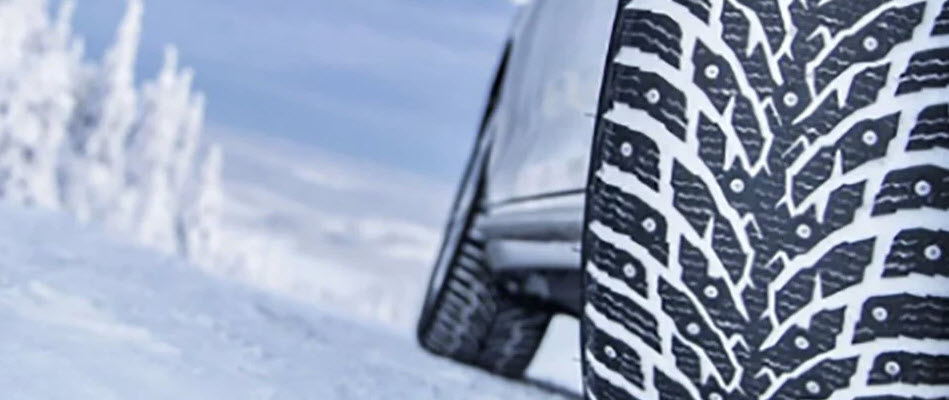
Everyone knows that studded tires are indispensable in small towns: snow is rarely or poorly removed there, densely packed snow crust is often formed, as well as ice. Numerous independent tire tests show that in these conditions the use of studs is justified, the braking distance of cars "shod" in them becomes significantly shorter.
Michael Zickfeld, Continental's Technical Customer Service Specialist, also recommends studded tires in the Russian metropolitan areas of Moscow and St. Petersburg. According to the expert, in both capitals, snow often melts on roads treated with reagents, and freezes again in the morning, turning into ice. If we add snowfall to this, then it is difficult to imagine a more dangerous situation: the advantage in this situation is on the side of cars with studded tires.
“In 2004, the use of studded tires was banned in Norway for one season,” says Michael Zikfeld. “The number of accidents increased several times, especially in small towns, which occurred mainly at intersections with traffic lights. removed."
removed."
A Pirelli technician reminds you that studded tires are designed mainly for northern countries and are prohibited in most European countries. In Russia, such tires will ensure safety in most cities.
December 28, 2017, 08:00
Shattered to pieces? Ten myths about winter driving
Studless tires are sometimes referred to as friction tires, from the Latin word frictio - friction. Pirelli specialists say that this concept is philistine. The principle of operation of all tires is friction, friction with the road surface. Modern companies offer a wide selection of rubber in their product lines, but you need to be able to distinguish between them. For example, there are so-called mild European winter tires designed for moderate winter temperatures and handling predominantly snow or wet surfaces. Others, just friction ones, are designed for harsh winters. There are also tires for southern regions (mainly European).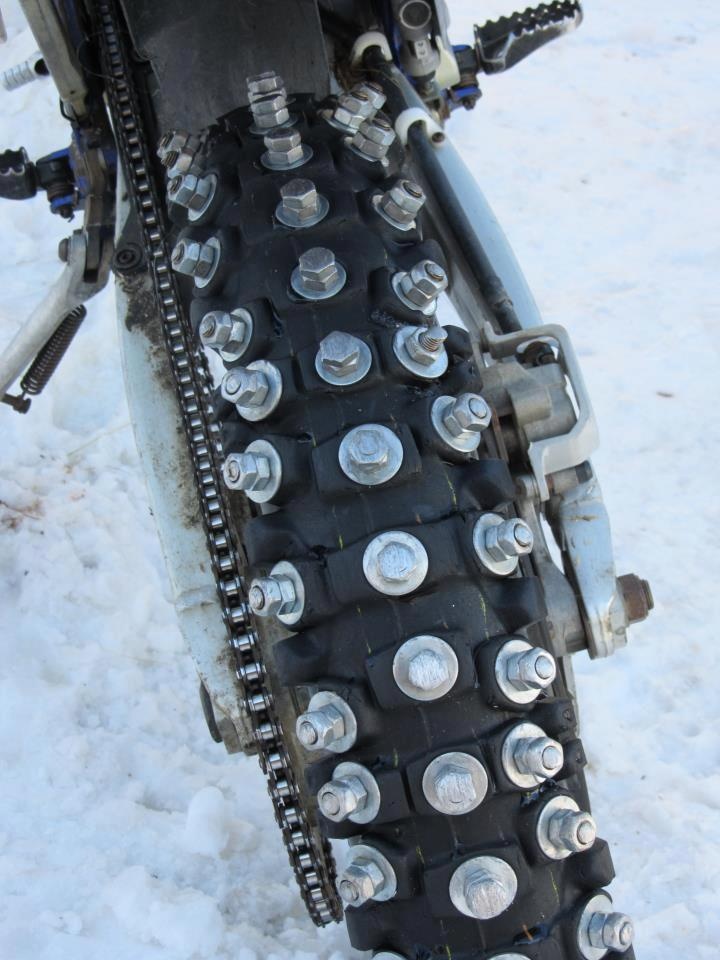 They are usually called "all seasons", and they are not adapted for Russian winters, do not provide the proper level of safety, although in the summer they can be used, for example, for off-road driving.
They are usually called "all seasons", and they are not adapted for Russian winters, do not provide the proper level of safety, although in the summer they can be used, for example, for off-road driving.
© Photo: courtesy of Continental Winter road
© Photo: courtesy of Continental
season in Russian latitudes. "One of the valuable benefits of non-studded tires is acoustic comfort," Pirelli notes.
December 26, 2017, 08:00
Try to steal: five simple life hacks that will keep your car from being stolen
Michael Zickfeld from Continental explains how to distinguish different types of non-studded tires from each other: the sidewall of a tire for harsh winters is at a right angle, while for a European one it is rounded. Euro winter tires are designed for operation from plus seven to minus 15 degrees Celsius. Most often they are used on dry asphalt or on wet snow. "Nordic" tires are designed for much lower temperatures: up to 50-60 degrees below zero. There is also a difference in the composition of rubber: tires are harder for mild winters, and softer for severe ones. By the way, you can’t even store European tires at minus 50, let alone drive them.
There is also a difference in the composition of rubber: tires are harder for mild winters, and softer for severe ones. By the way, you can’t even store European tires at minus 50, let alone drive them.
17 December 2017, 08:00
How steel was broken: deadly cars sold in RussiaTop deadly cars sold in Russia
there is no ice on the road. Tests also show that Velcro is much more stable on slush and loses traction at higher speeds than on a car with studded tires. As Michael Zikfeld explains, the lamellas of the "frictions" take the snow into themselves and make it grapple with the snow lying on the road. In addition, these grooves provide better water drainage. Even on a rolled snow surface or ice cover at negative temperatures down to minus 10 degrees Celsius, a water film is formed about a millimeter thick. Friction tires in this case drain water and provide a good grip. The liquid film disappears only at very low temperatures (about minus 30 degrees), and then non-studded tires lose their effectiveness.
Surprisingly, the more cars with studded tires in the city, the safer the operation of cars with non-studded tires. On an icy road, the spikes loosen the surface and thus create more grip for the Velcro. That is why, according to a Continental expert, friction tires can be used even in regions with severe winters. Of course, large cities are not alike, and winter somewhere in Siberia leaves almost no chance for non-studded tires.
One thing not to consider when choosing tires is the type of vehicle drive. “All drives brake equally, and what’s more, all-wheel drive cars weigh a little more than their 2-wheel drive counterparts, so quality tires that provide good deceleration are even more important to them,” says Zikfeld.
Braking is also affected by the width of the tire tread: if it is possible to install larger diameter discs on the car, then there is no doubt that with the same tires, the larger wheels will provide a little better deceleration.
For the studs and tread of any tire to last longer, it is important to break it in.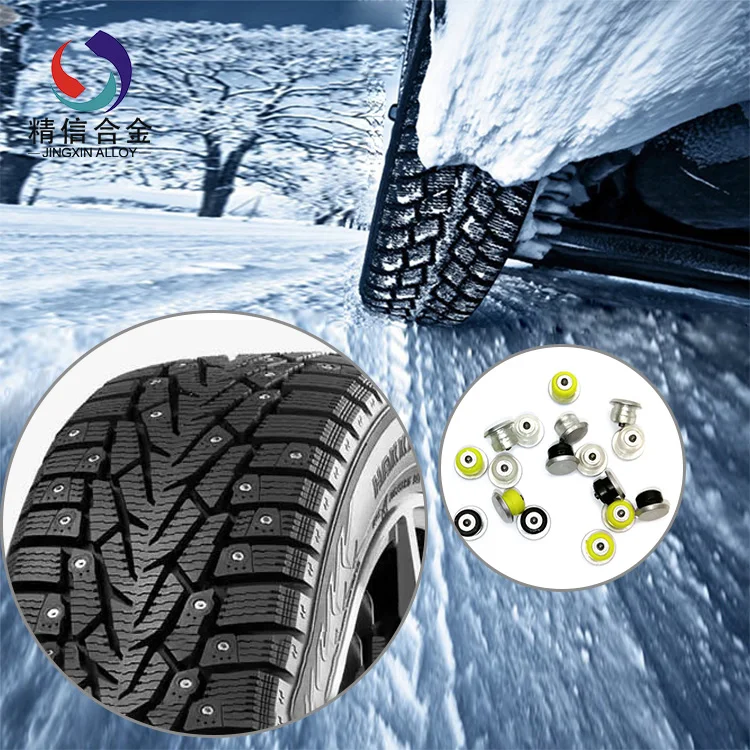 The Continental expert advises the first 500-800 kilometers to drive smoothly at a speed of no more than 100 kilometers per hour. So tires wear out less and last longer. Otherwise, the spikes will take the wrong position (bend at the wrong angle) and fly out faster. The same with the tread - without a break-in, it wears out much faster and the tire life can be reduced by two or more times.
The Continental expert advises the first 500-800 kilometers to drive smoothly at a speed of no more than 100 kilometers per hour. So tires wear out less and last longer. Otherwise, the spikes will take the wrong position (bend at the wrong angle) and fly out faster. The same with the tread - without a break-in, it wears out much faster and the tire life can be reduced by two or more times.
"We monitor the use of tires in taxis - they drive there in a year as much as an ordinary driver in three or four years," says Michael Zickfeld. "So, in some cases, a tire becomes unusable after 25 thousand kilometers, and in others, with the same distance traveled, all the spikes on it are intact.
Pirelli is of the same opinion and adds that the service life also depends on the correct pressure, adjusted camber / toe-in, temperature in which the rubber is used, road surface and off-season storage conditions.
December 10, 2017, 08:00
Through the snow and snowdrifts: what new cars will appear in Russia this winter
Do not sound the alarm if spikes start to fall out of the tire. "The loss of 10 percent of the spikes will not affect the behavior of the car," Continental notes. "Claws" usually fall out after 20 thousand kilometers, but if the driver drives the car aggressively, constantly starts with slippage, brakes sharply on dry pavement, this will happen much faster.
"The loss of 10 percent of the spikes will not affect the behavior of the car," Continental notes. "Claws" usually fall out after 20 thousand kilometers, but if the driver drives the car aggressively, constantly starts with slippage, brakes sharply on dry pavement, this will happen much faster.
In a relaxed driving mode, the studs fall out as the tread wears out, but even after losing half the tire will still be able to provide an acceptable level of braking. Replacement will be required when the tread depth becomes less than four millimeters: the spikes will fall out like scurvy teeth.
For a friction tire, everything is much simpler: you only need to look at the tread depth. Many car manufacturers have indicators: numbers or images of snowflakes are gradually erased, suggesting when it is time to change tires. According to Russian laws, it is forbidden to use winter tires with a tread depth of less than four millimeters.
If one of the wheels fell into a pit, was damaged in an accident and the winter tire became unusable, it must be replaced carefully.